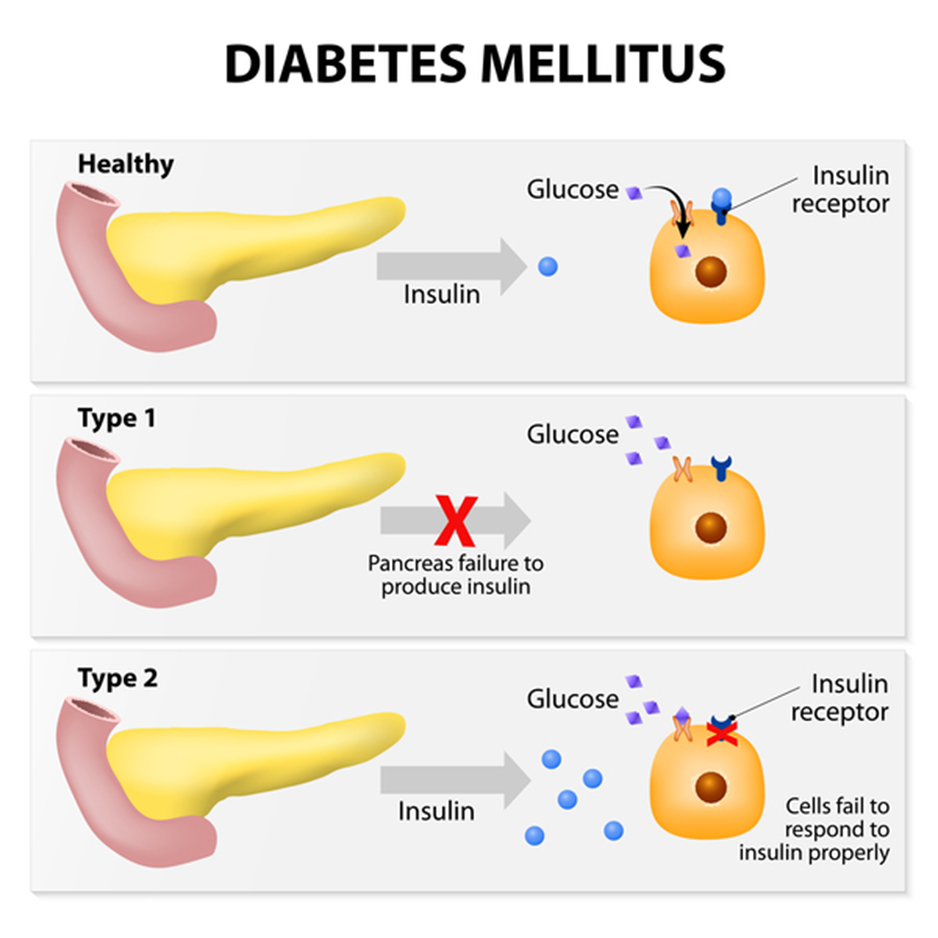A nurse is providing teaching to a client who has a new diagnosis of type 2 diabetes mellitus. The nurse should recognize that the client understands the teaching when he identifies which of the following as manifestations of hypoglycemia? (Select all that apply)
Tremors
Polydipsia
Confusion
Polyphagia
Polyuria
Correct Answer : A,C
Choice A reason: Tremors are a common sign of hypoglycemia, which occurs when the blood glucose level drops below 70 mg/dL. Hypoglycemia can cause shakiness, nervousness, and anxiety.
Choice B reason: Polydipsia, or excessive thirst, is not a manifestation of hypoglycemia, but rather of hyperglycemia, which occurs when the blood glucose level is too high. Hyperglycemia can cause dehydration, dry mouth, and increased urination.
Choice C reason: Confusion is another common sign of hypoglycemia, which can affect the brain's function and cognition. Hypoglycemia can cause dizziness, headache, difficulty concentrating, and impaired judgment.

Choice D reason: Polyphagia, or excessive hunger, is also not a manifestation of hypoglycemia, but rather of hyperglycemia. Hyperglycemia can cause the body to break down muscle and fat for energy, resulting in weight loss and increased appetite.
Choice E reason: Polyuria, or excessive urination, is also not a manifestation of hypoglycemia, but rather of hyperglycemia. Hyperglycemia can cause the kidneys to excrete excess glucose in the urine, leading to fluid loss and electrolyte imbalance.
Nursing Test Bank
Naxlex Comprehensive Predictor Exams
Related Questions
Correct Answer is D
Explanation
Choice A reason: Consuming a high-fat meal does not increase the medication absorption, but rather delays it. A high-fat meal can reduce the peak plasma concentration and prolong the onset of action of sildenafil.
Choice B reason: Taking the medication 2 hours prior to sexual activity is not the optimal timing, as sildenafil has a half-life of about 4 hours and reaches its peak effect within 30 to 120 minutes. The recommended dose is 50 mg taken as needed, approximately 1 hour before sexual activity.
Choice C reason: Swallowing the medication with grapefruit juice does not improve the action, but rather inhibits it. Grapefruit juice can interfere with the metabolism of sildenafil and increase its plasma concentration and side effects.
Choice D reason: Avoiding ingestion of the medication with nitrates is the correct information, as it can cause a severe and potentially fatal drop in blood pressure. Nitrates are drugs used to treat angina and heart failure, and they can interact with sildenafil to cause vasodilation and hypotension.
Correct Answer is A
Explanation
Choice A reason: Hypokalemia is a low level of potassium in the blood. Furosemide is a loop diuretic that increases the excretion of water and electrolytes, including potassium. Hypokalemia can cause muscle weakness, cramps, arrhythmias, and digoxin toxicity.
Choice B reason: Hypoglycemia is a low level of glucose in the blood. Furosemide does not affect blood glucose levels or insulin secretion. Hypoglycemia may be caused by other factors such as diabetes medications, fasting, or alcohol intake.
Choice C reason: Weight gain is not an adverse effect of furosemide. Furosemide causes weight loss by reducing fluid retention and edema. Weight gain may be a sign of worsening heart failure or fluid overload.
Choice D reason: Increased blood pressure is not an adverse effect of furosemide. Furosemide lowers blood pressure by decreasing blood volume and cardiac preload. Increased blood pressure may be caused by other factors such as salt intake, stress, or kidney disease.
Whether you are a student looking to ace your exams or a practicing nurse seeking to enhance your expertise , our nursing education contents will empower you with the confidence and competence to make a difference in the lives of patients and become a respected leader in the healthcare field.
Visit Naxlex, invest in your future and unlock endless possibilities with our unparalleled nursing education contents today
Report Wrong Answer on the Current Question
Do you disagree with the answer? If yes, what is your expected answer? Explain.
Kindly be descriptive with the issue you are facing.
